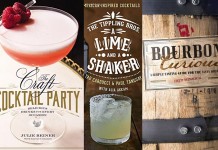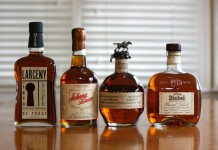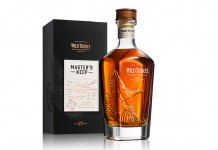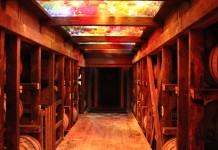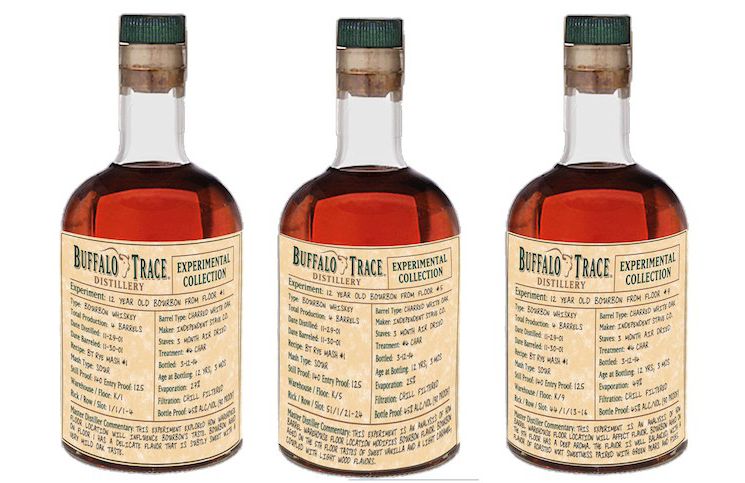
There’s a major misconception in the American Whiskey space that older whiskey is better whiskey. This is simply not true. Unlike Scotch whisky where age is a better indication of the maturation cycle, the factors that impact American whiskey are not as easily quantified. American whiskey is often made from a majority of corn and aged in newly charred American oak barrels in a climate with fairly dramatic climate swings. Scotch whisky is made from malted barley, has the luxury of using a variety of casks (most often previously used ex-bourbon barrels), and is aged in a temperate climate with smaller swings in temperature.
The result of all this is that American whiskeys have a dramatically different sweet spot than Scotch whisky. It’s widely accepted that American whiskey, aged in the US, has a sweet spot between 6 and 9 years with an upper range of 12-15 years. At this intersection, the base whiskey has gotten the maximum benefit from its time in barrel while still maintaining some semblance of balance. Scotch whisky’s sweet spot is much later with much less barrel impact – it may not hit its stride until 10-12 years with an upper range closer to 18-21 years. This isn’t to say that whiskies outside these ranges are bad – there are gems scattered at a wide age range – but for the majority of whisk(e)y, these are the key zones.
Because American whiskey is aged in new oak, the maturing process is much more of a battle between the spirit and the barrel, and time isn’t the only factor in how that battle will turn out. A majority of American whiskey is aged either in Kentucky or Tennessee where the summers are very hot and the winters are fairly cold. In transitional seasons the swing in temperature, even in a single day, can be pretty dramatic, with ice cold mornings and warm afternoons. This temperature swing is important because it causes the whiskey inside the barrel to expand and contract. When a spirit in a barrel expands, it permeates into the cells of the barrel. When it contracts, it exits the barrel walls back into the rest of the whiskey, bringing with it a whole host of water and alcohol soluble elements. In many American rackhouses the temperature, humidity, and range of the swing in those elements can vary dramatically from one floor to the next. This is why the very same whiskey aged for exactly the same amount of time can have distinctly different character.
Buffalo Trace has been a leader in exploring the impact of the various elements in American whiskey with their Experimental Collection. Previous releases in this collection have focused on the different elements that go into creating whiskey barrels and their impact on the final aged whiskey. This time around the Buffalo Trace Experimental Collection tackles the issue of barrel location in a rackhouse and the impact location has on a whiskey. For this experiment, Buffalo Trace placed casks of its Rye Mash #1 on three different floors of the nine-level Warehouse K: 1, 5 and 9. These casks were left to age for 12 years, and clearly show the impact of where a whiskey is aged.
Buffalo Trace Experimental Collection Floor #1 (90 proof / 45% ABV, $46.35 per 375 ml) – dark gold in color, the floor #1 bourbon has a solid oak nose with an undercurrent of vanilla, caramel, and marzipan. The entry is much lighter and sweeter than the nose with caramel, brown sugar, and cherry. The solid oak from the nose comes through more once we get to the midpalate where it’s joined by cinnamon and clove with an undercurrent of marzipan. The finish is medium length and captures some of the spice of the midpalate. Of the three, floor 1 had the lushest and softest mouthfeel with the best balance of sweet and oak.
Buffalo Trace Experimental Collection Floor #5 (90 proof / 45% ABV, $46.35 per 375 ml) – similar in color to floor #1, the nose on floor #5 is much more robust, the solid oak stronger with more depth to the nose. There’s the same vanilla note on the nose but the nuttiness isn’t there and instead there’s a cherry undertone. The entry for floor #5 is slightly spicier than floor #1. There is still sweet vanilla, brown sugar, and caramel as well as dark cherry, but a lot more of the oak is there from the start. In the midpalate, the spice level is dramatically higher with clear rye spice, more oak, more cinnamon, and stronger black pepper. Floor #5 has a longer finish with more spice that dries out much more than floor #1. The mouth feel to floor #5 is less lush than floor #1 but it also has a slightly better balance between sweet and spice.
Buffalo Trace Experimental Collection Floor #9 (90 proof / 45% ABV, $46.35 per 375 ml) – not much color variance on floor #9 but a fairly dramatic difference in the nose. As with the other two, floor #9 has solid oak on the nose, and here it’s at the peak of its robustness. Behind the oak is a touch of tobacco, some vanilla, and dried fruit. The entry for floor #9 is the most robustly flavored of all these three whiskeys with solid oak leaping onto the palate backed by dried fruit and caramel. There’s a little ashiness to the oak note in the midpalate which is accompanied by rye spice, cinnamon, black pepper, and a touch of clove. The finish is fairly long and slightly acidic, much less pleasant than floor #5, and dramatically stronger and longer than floor #1. The lushness that we saw with floor #1 is completely absent in floor #9, which feels much sharper and edgier.
While none of these three whiskeys from Buffalo Trace’s Experimental Collection are blockbusters, together they clearly demonstrate just how different three barrels of whiskey of identical mash and age can be. Of the three, the release from floor #9 was the most clearly over-oaked with some of the unpleasant elements of the barrel (the ashiness) overtaking some of the pleasant ones. Floor #5 showed the transition point where oak begins to take over, but not completely, and floor #1 showed off a point where the spirit was able to shine through the most. These releases are also a good example of why most American whiskey is released blended. When you mix these three whiskeys together, you get a much more rounded and balanced whiskey that tempers some of the deep oakiness with sweet lush tones, and has more depth and complexity. These three whiskeys are just a snapshot, but it’s a pretty compelling argument to let tasting be your guide to what you buy rather than buying based solely on age.







